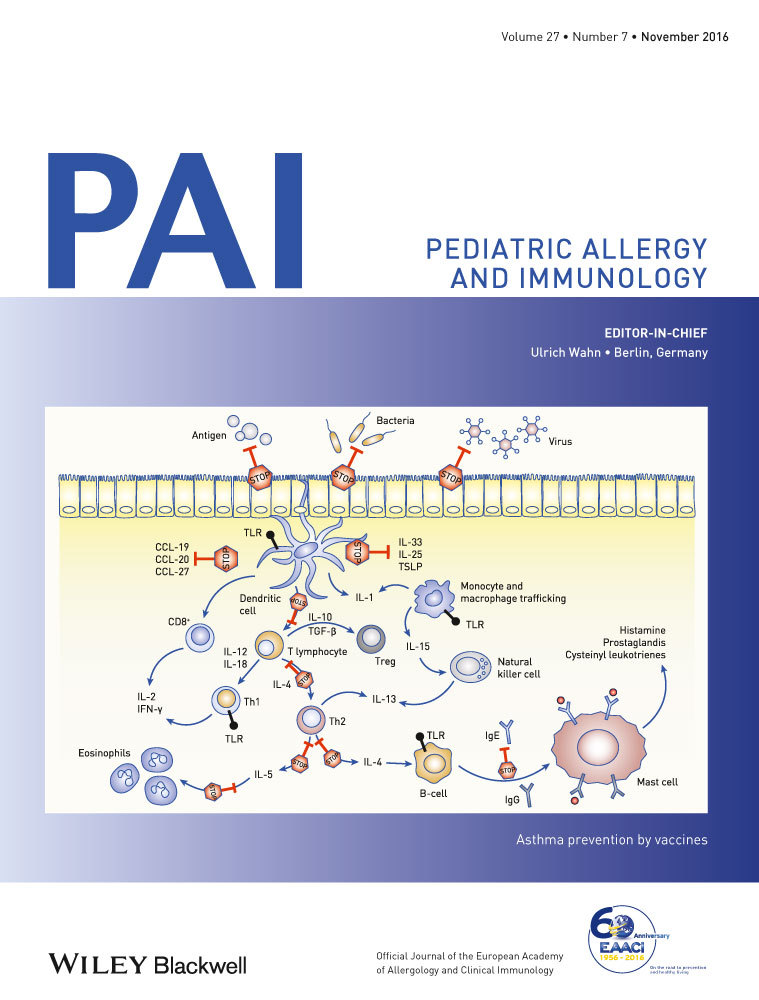IL-33 polymorphisms are associated with increased risk of hay fever and reduced regulatory T cells in a birth cohort
Abstract
Background
IL-33 polymorphisms influence the susceptibility to asthma. IL-33 indirectly induces Th2-immune responses via dendritic cell activation, being important for development of atopic diseases. Furthermore, IL-33 upregulates regulatory T cells (Tregs), which are critical for healthy immune homeostasis. This study investigates associations between IL-33 polymorphisms during the development of childhood atopic diseases and underlying mechanisms including immune regulation of Tregs.
Methods
Genotyping of IL-33-polymorphisms (rs928413, rs1342326) was performed by MALDI-TOF-MS in 880 of 1133 PASTURE/EFRAIM children. In 4.5-year-old German PASTURE/EFRAIM children (n = 99), CD4+CD25highFOXP3+ Tregs were assessed by flow cytometry following 24-h incubation of PBMCs with PMA/ionomycin, LPS or without stimuli (U). SOCS3, IL1RL1, TLR4 mRNA expression and sST2 protein levels ex vivo were measured in PASTURE/EFRAIM children by real-time PCR or ELISA, respectively. Health outcomes (hay fever, asthma) were assessed by questionnaires at the age of 6 years.
Results
rs928413 and rs1342326 were positively associated with hay fever (OR = 1.77, 95%CI = 1.02–3.08; OR = 1.79, 95%CI = 1.04–3.11) and CD4+CD25highFOXP3+ Tregs (%) decreased in minor allele homozygotes/heterozygotes compared to major allele homozygotes (p(U) = 0.004; p(LPS) = 0.005; p(U) = 0.001; p(LPS) = 0.012). SOCS3 mRNA expression increased in minor allele homozygotes and heterozygotes compared with major allele homozygotes for both IL-33-polymorphisms (p(rs928413) = 0.032, p(rs1342326) = 0.019) and negatively correlated to Tregs.
Conclusions
IL-33-polymorphisms rs928413 and rs1342326 may account for an increased risk of hay fever with the age of 6 years. Lower Tregs and increased SOCS3 in combined heterozygotes and minor allele homozygotes may be relevant for hay fever development, pointing towards dysbalanced immune regulation and insufficient control of allergic inflammation.




